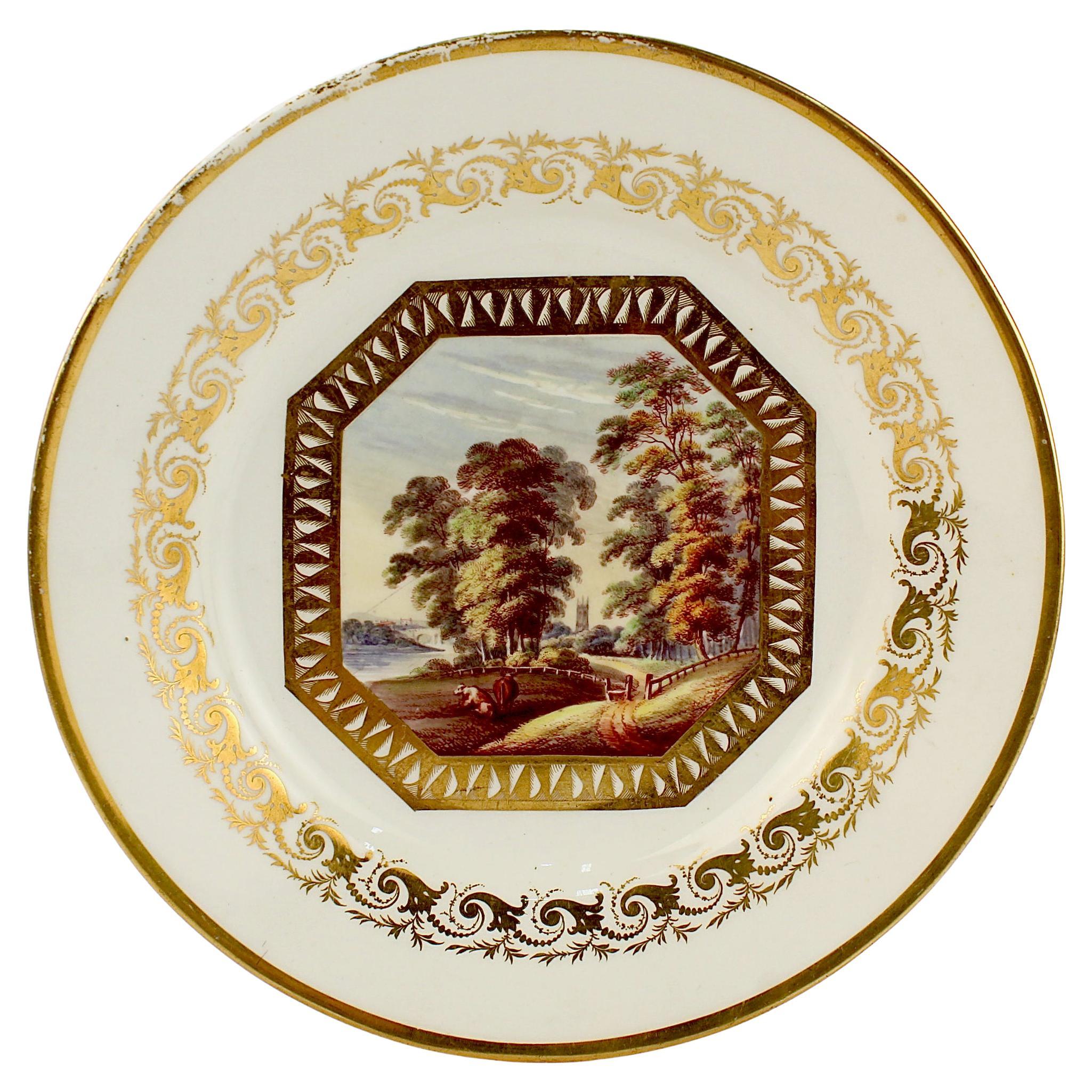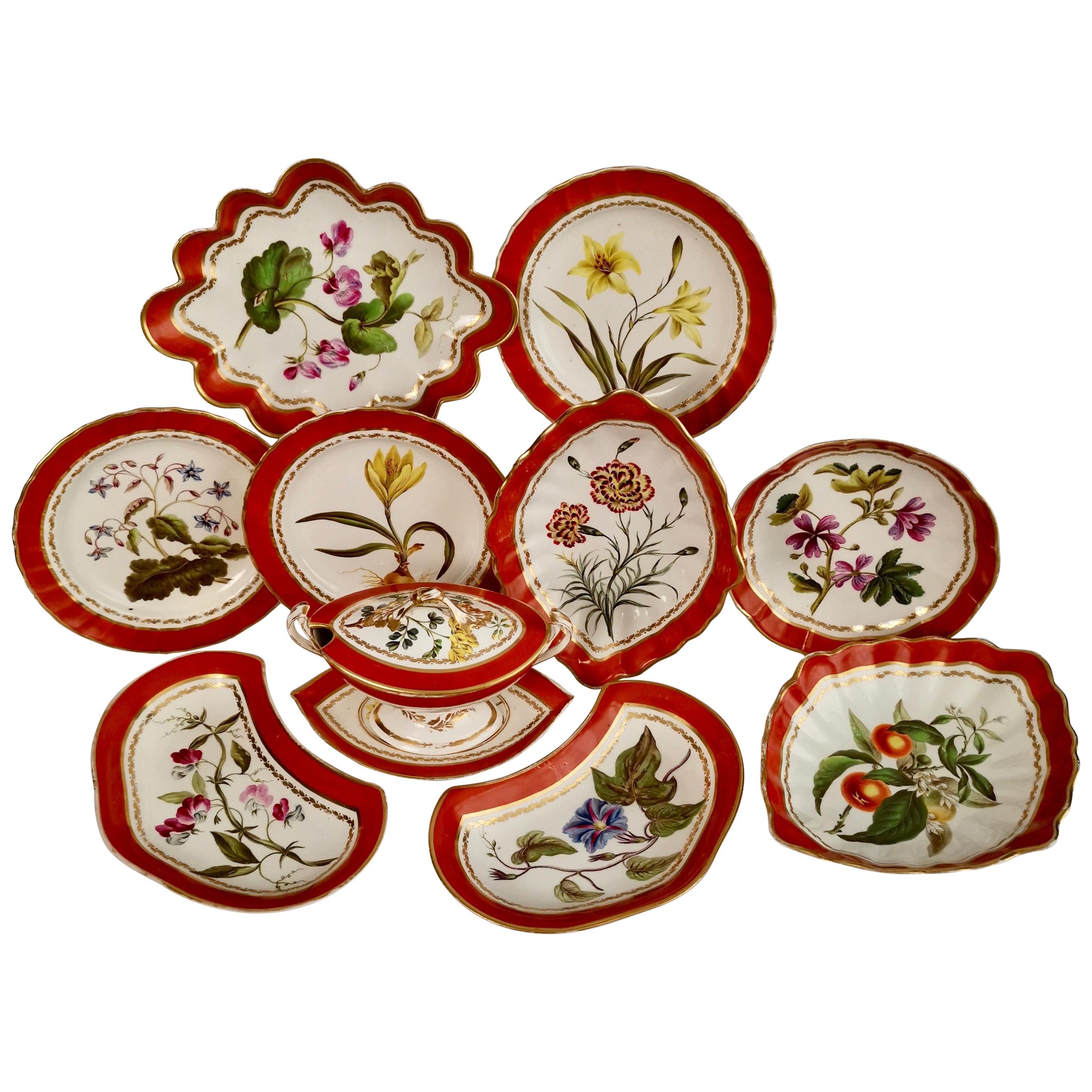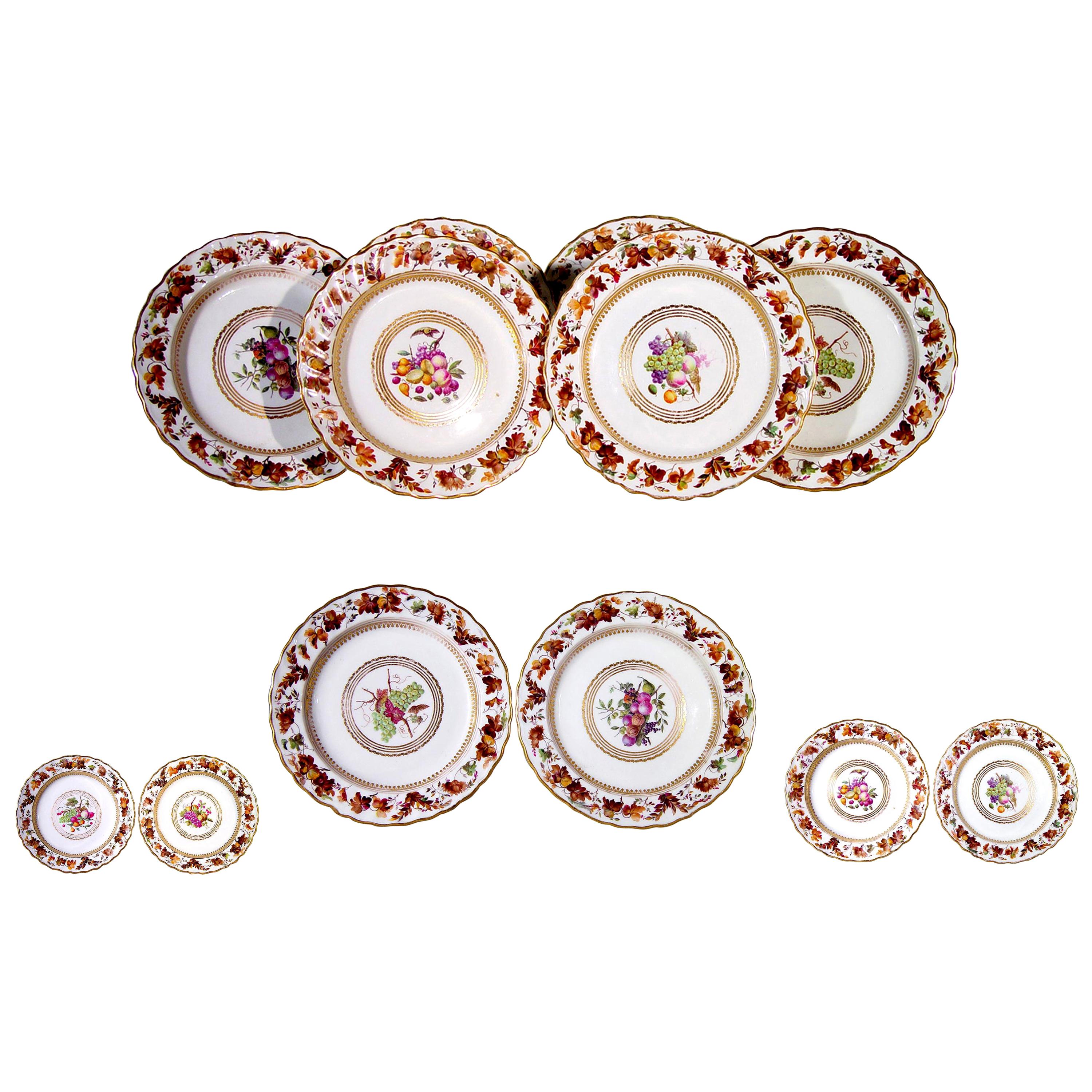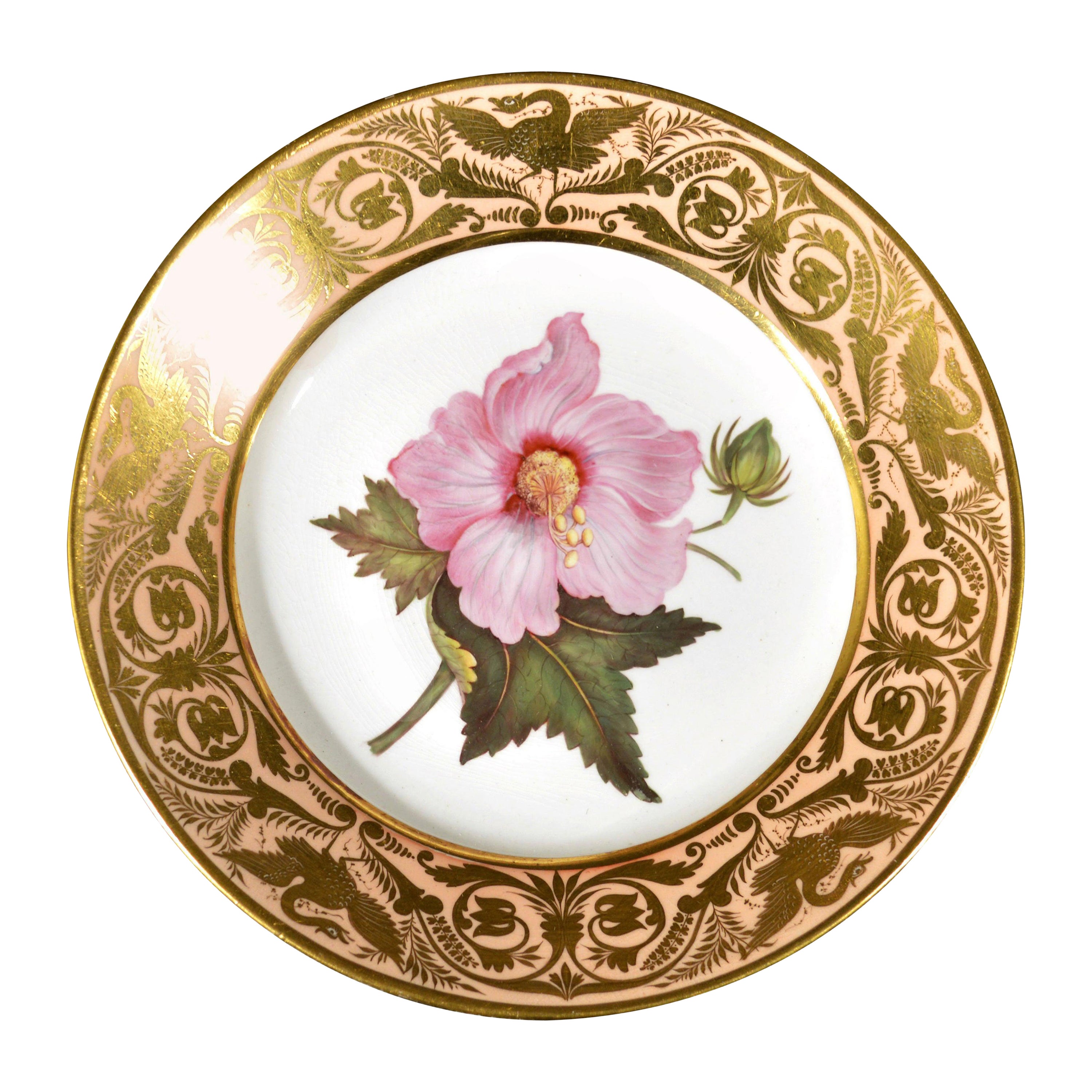Items Similar to Crown Derby Porcelain Plate, Puce Cherubs by Richard Askew, Georgian ca 1785
Want more images or videos?
Request additional images or videos from the seller
1 of 13
Crown Derby Porcelain Plate, Puce Cherubs by Richard Askew, Georgian ca 1785
About the Item
This is a beautiful Crown Derby plate made in about 1785. The very charming decoration of a puce putto is by Richard Askew.
The Derby Porcelain factory has its roots in the late 1740s, when Andrew Planché, a Walloon Huguenot refugee, started making simple porcelain toys shaped like animals in his back yard. In 1756 Staffordshire enameller William Duysbury and banker John Heath started a new porcelain factory with Planché and this was to grow out to the largest factory of its time, buying up the bankrupted Chelsea and Bow factories, as well as the stock of several other workshops including that of James Giles. The combination of various traditions, porcelain making skills and sophisticated clients enabled Duesbury to create one of the best porcelain factories of the 18th and 19th Centuries, which after many ups and downs is still operative today.
Richard Askew (ca 1730-1798) was one of the famous artists who came from Chelsea and then moved to Derby in about 1772. He didn't only work for Chelsea and Derby, but also worked on a freelance basis for many others, and there is evidence that he advertised himself all over Britain and Ireland as a miniature painter.
This plate is from about 1885, when Askew had relocated to London but still carried out many works for Derby. The plate has an interesting pattern that reminds you of the French-style "oeil de perdrix", although it actually consists of little roses. In the centre of the plate is a puce cherub or putto who seems to be busy talking to a pair of doves. The cherub is a typical chubby fellow the way Richard Askew was known to paint them.
Condition report: The plate is in excellent condition without any damage, repairs or crazing, and just some light wear on the face as visible in the pictures.
Antique British porcelain is never perfect. Kilns were fired on coal in the 1800s, and this meant that china from that period can have some firing specks from flying particles. British makers were also known for their experimentation, and sometimes this resulted in technically imperfect results. Due to the shrinkage in the kiln, items can have small firing lines or develop crazing over time, which should not be seen as damage but as an imperfection of the maker's recipes, probably unknown at the time of making. Items have often been used for many years and can have normal signs of wear, and gilt can have signs of slight disintegration even if never handled. I will reflect any damage, repairs, obvious stress marks, crazing or heavy wear in the item description but some minor scratches, nicks, stains and gilt disintegration can be normal for vintage items and need to be taken into account.
There is widespread confusion on the internet about the difference between chips and nicks, or hairlines and cracks. I will reflect any damage as truthfully as I can, i.e. a nick is a tiny bit of damage smaller than 1mm and a chip is something you can easily see with the eye; a glazing line is a break in the glazing only; hairline is extremely tight and/or superficial and not picked up by the finger; and a crack is obvious both to the eye and the finger.
Dimensions: Diameter 23cm (9").
- Creator:Crown Derby (Maker)
- Dimensions:Height: 0.75 in (1.91 cm)Diameter: 9 in (22.86 cm)
- Style:Georgian (Of the Period)
- Materials and Techniques:
- Place of Origin:
- Period:1780-1789
- Date of Manufacture:circa 1785
- Condition:Wear consistent with age and use. No damage, crazing or repairs; just some light wear as visible in the pictures.
- Seller Location:London, GB
- Reference Number:
About the Seller
5.0
Gold Seller
These expertly vetted sellers are highly rated and consistently exceed customer expectations.
Established in 2016
1stDibs seller since 2019
209 sales on 1stDibs
Typical response time: 1 hour
- ShippingRetrieving quote...Ships From: London, United Kingdom
- Return PolicyA return for this item may be initiated within 14 days of delivery.
More From This SellerView All
- Derby Porcelain Dessert Service Red Botanical Attr. to John Brewer, Regency 1795By John Brewer, Crown DerbyLocated in London, GBThis is a stunning and extremely rare part dessert service made by Derby between circa 1795 and 1800 in the Regency era. The service is decorated with named botanical studies attributed to John Brewer. The service consists of a lidded sauce comport on a stand, two kidney dishes, two lozenge shaped dishes, one lozenge shaped low footed comport...Category
Antique 1790s English George III Dinner Plates
MaterialsPorcelain
- Derby Porcelain Tea Bowl, Artichoke Pattern in Turquoise, Georgian ca 1785By DerbyLocated in London, GBThis is a beautiful tea bowl and saucer made by Derby in about 1785. The set has the distinctive "artichoke" moulding and a bright turquoise ground with the white artichoke surface ...Category
Antique 1780s English George III Tea Sets
MaterialsPorcelain
- Derby Porcelain Coffee Cup, Artichoke Pattern in Turquoise, Georgian ca 1785By DerbyLocated in London, GBThis is a beautiful coffee cup and saucer made by Derby in about 1785. The set has the distinctive "artichoke" moulding and a bright turquoise ground with the white artichoke surface...Category
Antique 1780s English George III Tea Sets
MaterialsPorcelain
- John Rose Coalport Plate, Canterbury landscape by Thomas Baxter, Georgian ca1810By Thomas Baxter, Coalport Porcelain, John RoseLocated in London, GBThis is a beautiful and very rare dessert plate made by John Rose / Coalport in circa 1810, which was the late Georgian period. The plate is decorated with a superbly painted named l...Category
Antique 1810s English George III Dinner Plates
MaterialsPorcelain
- Worcester Porcelain Deep Plate, Aesop Fable Three Foxes, ca 1780By 1st Period Worcester Dr. WallLocated in London, GBThis is a very rare deep plate made by Worcester around 1780. The plate has a basket weave rim and a very charming image of an Aesop fable of three foxes coversing under a large tree...Category
Antique 1780s English George III Porcelain
MaterialsPorcelain
- Coalport Plate, Windsor Castle with Deer, Sepia, Thomas Baxter, Georgian ca 1805By Thomas Baxter, Coalport Porcelain, John RoseLocated in London, GBThis is a beautiful and very rare dessert plate made by Coalport in circa 1805, which was the late Georgian era. The plate is decorated with a superbly painted named landscape of Win...Category
Antique Early 1800s English George III Dinner Plates
MaterialsPorcelain
You May Also Like
- Antique Topographical Derby English Porcelain Plate Entitled 'Near Derby'By DerbyLocated in Philadelphia, PAA fine antique 19th century Derby hard paste porcelain plate. Decorated with a hand painted topographical scene to its center. The scene depicts a bucolic landscape 'Near Derby' in a gilt cartouche and surrounded by a gilt cornucopia...Category
Antique 19th Century British George III Dinner Plates
MaterialsPorcelain
- 12 Royal Crown Derby Cobalt Blue Neoclassical Dessert PlatesBy Royal Crown Derby PorcelainLocated in Great Barrington, MAAn unusual set of 12 Royal Crown Derby dessert plates featuring an elegant and restrained central subject of subtly different urns wit...Category
Early 20th Century British Neoclassical Dinner Plates
MaterialsPorcelain, Paste
- Derby Porcelain Plates, Pattern 126, Painted by William Longden, Set of SixBy DerbyLocated in Downingtown, PAThe beautiful and stylish Derby porcelain set of six plates are painted by William Longden with fruit within a heart-shaped gilt border. The fruit depicted include grapes, plums, str...Category
Antique 1790s English Georgian Dinner Plates
MaterialsPorcelain
- Antique Derby Porcelain Salmon Ground Plate, An Annual Lavetera, by John BrewerBy DerbyLocated in Downingtown, PAAntique Derby Porcelain Botanical Salmon-ground Plate, Annual Lavetera, by John Brewer, Circa 1815. The Derby porcelain plate is boldly p...Category
Antique Early 19th Century English Georgian Dinner Plates
MaterialsPorcelain
- Derby Porcelain Salmon Ground Plate, Marsh Hibiscus, after William CurtisBy DerbyLocated in Downingtown, PAAntique Derby Porcelain Botanical Salmon-ground Plate, Marsh Hibiscus, by John Brewer after Curtis, The Botanical Magazine, #882, 1806, circa 1815. The Derby Porcelain plate is superbly painted with a Marsh Hibiscus botanical specimen with richly gilded borders with swans and stylized flowerheads on a rich salmon ground.y gilded borders with swans and stylized flowerheads are on a rich salmon ground. The flower is named on the reverse: "Marsh Hibiscus". Diameter: 8 7/8 inches (22.5 cm) Mark: crown, crossed batons, and D mark in red, numerals 4 & 13 in yellow & green inside foot rim. John Brewer, (1764-1816) John was the elder of two brothers who both worked at Derby. Their parents were both artists and from 1762-1767 had studios in London at Rupert Street. Brewer started working at Derby in 1795. He was a talented watercolorist and had never applied his art to porcelain painting. At Derby, he painted a variety of subject matters including plant and flower painting. The Botanical Magazine is one of the oldest - and longest-published - of the British botanical...Category
Antique Early 19th Century English Georgian Dinner Plates
MaterialsPorcelain
- Pair of Italian Richard Ginori Porcelain PlatesBy Richard GinoriLocated in Vilnius, LTPair of Italian Richard Ginori porcelain plates with pomegranate decor and gilded edge.Category
21st Century and Contemporary Italian Porcelain
MaterialsPorcelain
Recently Viewed
View AllMore Ways To Browse
Shaped Plates
Plates For Decoration
Antique Plates 19th Century
19th Century Plate Antique
18th Century Plates
Vintage French Plates
Small Antique Plates
Silver Plated Handles
Rose Plates
Antique Back Plate
Nevers Plate
England Antique Plates
Made In England Plates
Antique Style Plates
Crown Plates
Small Vintage Plates
China Antique Plates
Chinese Antique Chinese Plates Chinese Plates





